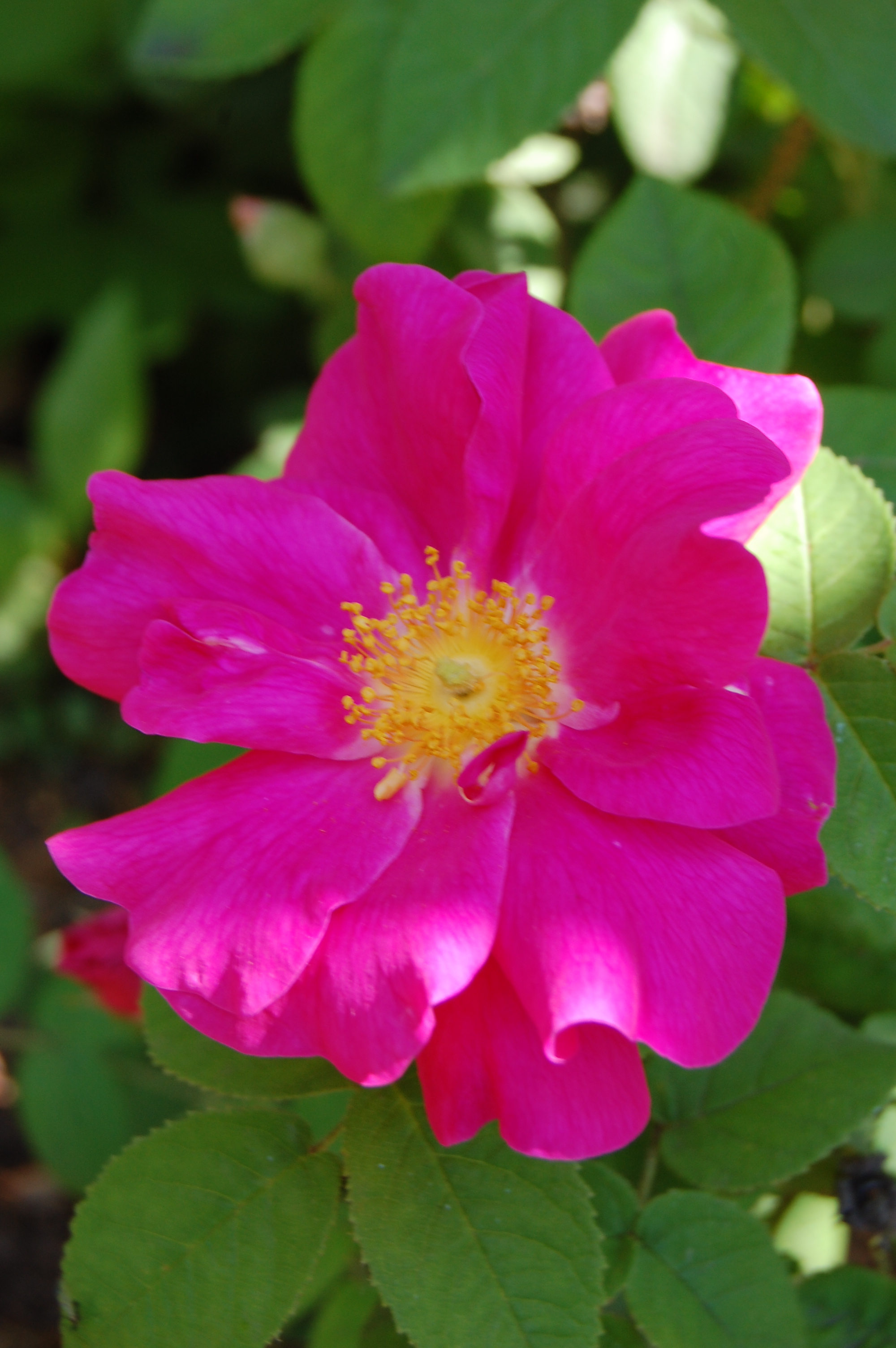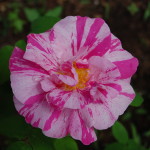Have you ever wondered why you frequently see roses in herb gardens? Are roses considered herbs? And why is it always that ugly, shrubby rose that only blooms in the spring?
The answer lies in medieval history, specifically the time of the crusades. What we call the Apothecary’s Rose is native to ancient Persia, an area now encompassed by Iran and Afghanistan. Amongst the many things that the crusading knights brought back from the Middle East were roses.
The roses, Rosa gallica var. officinalis, were considered valuable for their medicinal qualities rather than their beauty. There were no drugstores in those times. Herb gardens were the pharmacies of medieval Europe. Monks, the apothecaries of the Middle Ages, prepared medicinal oils, powders, preserves and jellies from the petals of the rose bushes that they grew with their herbs.
It was also a time that knew no deodorants or sanitation. When dried, the strongly scented petals of the Apothecary’s Rose, were a welcome addition to potpourris used to mask the stench of everyday life. Dried petals were also rolled into beads and used in rosaries.
In England, the Apothecary’s Rose was adopted by the House of Lancaster as its symbol. Their rivals, the House of York, had a white rose as its symbol. Their struggle for power became known as the War of the Roses. Henry Tudor (Henry VII), the final victor, in a gesture of peace, combined the two roses for what became known in heraldry as the Tudor Rose.
The Apothecary’s Rose is a small deciduous shrub, growing to about 4 feet high and spreads readily by suckers. It is one of the few roses that can tolerant light shade. Its branches are thickly covered with thorns. It needs little to no pruning. In the spring before the bushes bloom, prune away any dead branches. You can lightly prune and shape your shrub after it finishes blooming.
The flowers are a bright pink and either a single set of five petals or semi-double. The centers are golden yellow. Like all the older rose species, it flowers once in the spring. The blooms are followed by large orange or brown hips that are frequently made into jelly. The hips are an excellent source of vitamin C.
A sport of the Apothecary’s Rose, with red and white stripes, is known as Rosa mundi, named in honor of Fair Rosamond, the mistress of Henry II. According to legend, Rosamond was murdered by Henry’s jealous wife, Eleanor of Aquitaine, using a poison that was added to an oil made from the Apothecary’s Rose and the white rose that would become the symbol of the House of York. The stripes represent the two roses.
Although we now get our medications from a drugstore, traditional herb gardens still include the Apothecary’s Rose in honor of its history and utility.




8 Comments on “Apothecary’s Rose”
i cant really keep patnls in the house because we have cats who eat everything and my room is northeast facing and our backyard has no room. there is some woods right behind my neighborhood and i was wanting to clear a little chunk of open ground to start a little herb garden.i cant really keep patnls in the house because we have cats who eat everything and my room is northeast facing and our backyard has no room.there is some woods right behind my neighborhood and i was wanting to clear a little chunk of open ground to start a little herb garden.and yes i know this could indeed be illegal but that’s why ill be extra careful
My pink Apothecary rose that I’ve had for years is blooming white this year! Yike, what happened! Still extremely fragrant though.
My guess would be that what you have is a “sport”, a spontaneous genetic mutation. It should only be blooming white on a few stems, not the entire shrub, correct?
Dear Herb Lady,
I was stunned when my red bee balm came up one year with white blossoms, not red. All of them in one area. WAs quite puzzled. Several years later they returned to red. Weird.
Interesting article thank you. We’ve been given one of these roses (Rosa gallica officinalis) which needs to be planted out in the garden and are wondering what is the best type of organic compost to use and to feed it please?
I am not familiar with “types of organic compost.” I make my own compost which is composed of weeds from my garden, shredded leaves and scraps from my kitchen. I don’t purchase retail compost because I don’t know what is in it.
Can the Apothecary Rose grow in zone 9?
Unfortunately, the Apothecary rose will only grow as far south as zone 8. Your summers are too hot for it.